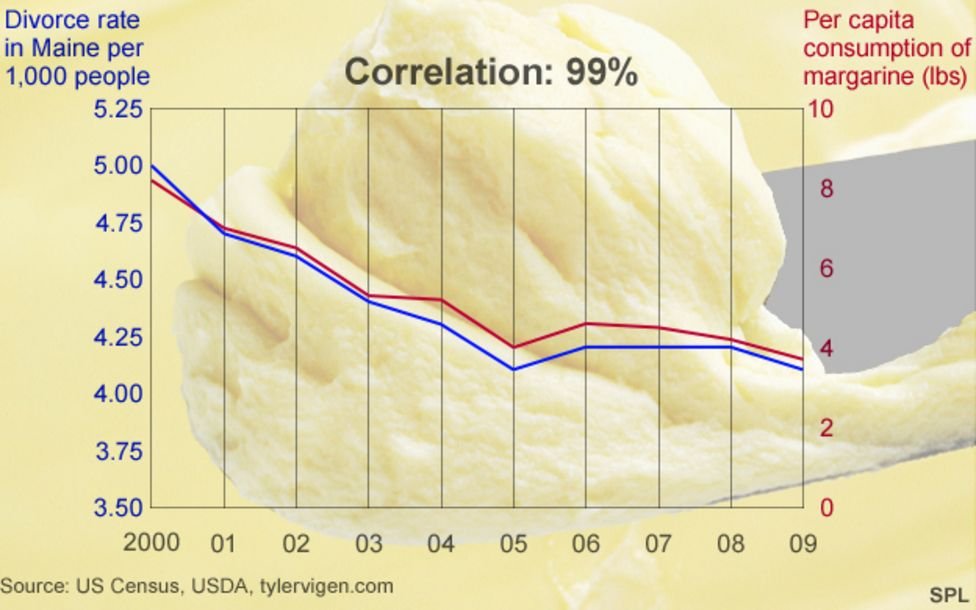3 Data Science concepts every FP&A Analyst needs to know
Financial models powered by artificial intelligence, machine learning, and sophisticated algorithms become more popular each day.
As FP&A professionals, we don’t need to be able to build them from scratch.
But we need to know their use cases, advantages, and shortcomings.
And we need to know basic Data Science vocabulary, so we can effectively lead AI implementation projects.
While dedicated Data Science teams know how to build these complex models, they are typically not as close to the business as Finance professionals.
As a result, we need to be able to tell in which situation to use the appropriate Data Science application.
Here are 3 basic concepts you need to know:
1) Correlation versus Causation
It’s considered one of the golden rules of statistics: Just because the movements of two variables track each other closely over time doesn't mean that one causes the other.
Just take a look at the image above. Does it make sense that higher margarine consumption results in higher divorce rates?
To differentiate factual causation from mere correlation, we need to consider two things:
a) What’s the causal link or mechanism, and
b) is there enough scientific rigor that shows a statistically significant correlation (for instance, you may not be considering enough data points).
Do you like this post? Subscribe to my free weekly newsletter "FP&A Tuesday" for insights and actionable advice just like it:
2) Backtesting
AI and ML models allow us to do what’s almost impossible with traditional modeling.
We can act as if the past hasn’t happened yet.
We can start the model using data until a year ago and see how well it predicted last year.
Then, a comparison to actuals shows how effective the model was.
As a result, we can have multiple models compete with each other and select the one with the lowest variance to reported actuals.
The vital point for FP&A analysts is this: don’t agree to use an AI/ML model until you have seen the backtesting results.
3) Feature Selection
You may have heard the term “garbage in, garbage out” before. Computer Scientists use it to remind us that the best model won’t make any valuable predictions if we feed it with the wrong inputs.
When the Data Science team presents a model to you, always ask which “Features” (a term for model inputs) they chose, why they selected them and which other features they tried.
If you’d like to learn more about FP&A, I offer help in three ways:
1️⃣ Subscribe to my free newsletter “FP&A Tuesday” here.
2️⃣ Listen to 75 bite-sized mini lessons and get FP&A advice on the go.
3️⃣ Join my live online course FP&A Bootcamp to master FP&A in two weeks.

